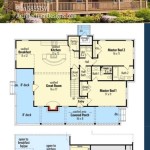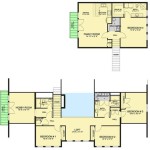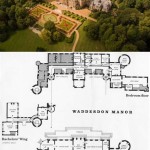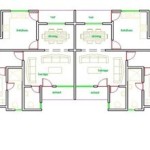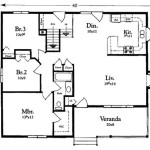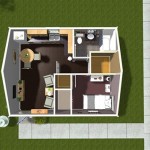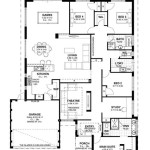New House Plans For 2024: Evolving Trends and Innovative Designs
The residential construction landscape is in constant flux, adapting to changing lifestyles, technological advancements, and evolving environmental concerns. As we move into 2024, new house plans reflect a deeper understanding of what modern homeowners desire: functionality, sustainability, and aesthetic appeal. This article explores some of the key trends and innovative designs that are shaping the future of residential architecture.
Emphasis on Sustainable and Energy-Efficient Design
One of the most significant shifts in house plan design is the increased emphasis on sustainability and energy efficiency. This trend is driven by a growing awareness of environmental impact and a desire to reduce long-term operating costs. Homeowners are actively seeking designs that minimize their carbon footprint and maximize energy savings. The incorporation of renewable energy sources, such as solar panels, is becoming increasingly common, often integrated seamlessly into the architectural design.
Passive solar design principles are also gaining traction. These principles involve orienting the house to maximize natural light and minimize heat gain in summer and heat loss in winter. Proper insulation, high-performance windows, and efficient HVAC systems are standard features in new energy-efficient home designs. Water conservation is another key consideration, with features like rainwater harvesting systems and low-flow plumbing fixtures becoming increasingly popular.
Furthermore, sustainable building materials are being prioritized. This includes using reclaimed wood, recycled content products, and locally sourced materials to reduce transportation costs and environmental impact. Green building certifications, such as LEED and Energy Star, are becoming increasingly valuable, providing independent verification of a home's sustainability performance. The combination of these factors is leading to homes that are not only environmentally responsible but also offer significant cost savings over their lifespan.
Beyond the technical aspects, sustainable design also considers the overall impact on the surrounding environment. This includes preserving existing trees and vegetation, minimizing site disturbance during construction, and promoting biodiversity on the property. Landscaping is often designed to be drought-tolerant and to provide habitat for local wildlife. The goal is to create homes that are harmonious with their natural surroundings.
The integration of smart home technology further enhances energy efficiency. Smart thermostats, lighting controls, and appliance monitors allow homeowners to optimize energy consumption and reduce waste. These systems can be remotely controlled and programmed to adapt to individual lifestyles and preferences, ensuring that energy is only used when and where it is needed. Data analytics provide insights into energy usage patterns, allowing homeowners to make informed decisions about how to further reduce their environmental impact.
Open Floor Plans and Flexible Living Spaces
Open floor plans continue to be a popular choice for new homes in 2024. These designs create a sense of spaciousness and connectivity, making them ideal for modern lifestyles. Open floor plans typically combine the kitchen, dining area, and living room into a single, large space, promoting interaction and allowing for flexible use of the area. This is particularly appealing to families with young children, as it allows parents to keep an eye on their kids while preparing meals or engaging in other activities.
However, the trend is evolving beyond completely open concepts. Homeowners are now seeking a balance between open spaces and defined zones. This can be achieved through the use of partial walls, changes in flooring, or strategically placed furniture to create distinct areas within the larger space. These semi-open plans provide a sense of connection while still offering some degree of privacy and separation. This is particularly important for individuals who work from home or who need a quiet space for relaxation.
Flexible living spaces are also becoming increasingly important. This refers to rooms that can be easily adapted to different purposes. For example, a home office can double as a guest bedroom, or a playroom can be converted into a home theater. The use of modular furniture and movable partitions allows homeowners to reconfigure their spaces to meet their changing needs. This adaptability is especially valuable in smaller homes, where every square foot needs to be optimized.
Outdoor living spaces are also being incorporated into the overall design. Patios, decks, and porches are becoming extensions of the indoor living area, providing opportunities for outdoor dining, relaxation, and entertainment. These spaces are often connected to the main living area through large sliding doors or French doors, creating a seamless transition between indoors and outdoors. Outdoor kitchens, fireplaces, and comfortable seating enhance the functionality and appeal of these spaces.
The integration of smart home technology further enhances the flexibility of living spaces. Smart lighting controls, automated window shades, and integrated audio-visual systems can be easily adjusted to create different moods and atmospheres. Remote control and voice activation allow homeowners to customize their living environment with ease. This level of control allows for a more personalized and adaptable living experience.
Prioritizing Wellness and Biophilic Design
The focus on wellness is a growing trend in home design. Homeowners are increasingly seeking spaces that promote physical and mental well-being. This includes features such as natural light, good ventilation, and access to nature. Biophilic design, which incorporates natural elements into the built environment, is becoming increasingly popular.
Natural light is a key element of wellness-focused design. Large windows, skylights, and light wells are used to maximize the amount of natural light that enters the home. This not only reduces the need for artificial lighting but also improves mood and energy levels. Proper ventilation is also essential for maintaining good indoor air quality. This includes the use of energy-efficient ventilation systems and the incorporation of natural ventilation strategies, such as operable windows and skylights.
Access to nature is another important aspect of biophilic design. This can be achieved through the incorporation of indoor plants, green walls, and water features. Views of nature from windows and access to outdoor spaces also contribute to a sense of well-being. The use of natural materials, such as wood, stone, and bamboo, further enhances the connection to nature.
Noise reduction is also a consideration in wellness-focused design. Soundproofing materials and techniques are used to minimize noise from outside and inside the home. This creates a more peaceful and relaxing environment. Dedicated spaces for exercise, meditation, or yoga are also becoming more common.
Smart home technology can also play a role in promoting wellness. Smart air purifiers, water filters, and lighting systems can be used to create a healthier and more comfortable living environment. Sleep monitoring systems and personalized lighting schemes can improve sleep quality. These technologies can be integrated into the overall design to create a home that actively supports the well-being of its occupants.
Universal design principles are also being incorporated to ensure that homes are accessible and adaptable to people of all ages and abilities. This includes features such as wider doorways, grab bars in bathrooms, and lever-style door handles. Universal design promotes inclusivity and allows homeowners to age in place comfortably.
In addition to these key trends, several other factors are influencing new house plans for 2024. The rise of remote work is driving demand for larger home offices and dedicated workspaces. The increasing popularity of multi-generational living is leading to designs that accommodate multiple families under one roof. The desire for personalization and customization is driving demand for flexible and adaptable home designs. As technology continues to evolve, new and innovative features will continue to shape the future of residential architecture.
The trends outlined above demonstrate a clear shift towards homes that are not only aesthetically pleasing but also functional, sustainable, and supportive of overall wellbeing. These design choices reflect a deeper understanding of the needs and aspirations of modern homeowners in a rapidly changing world. The integration of technology, sustainable materials, and biophilic principles is creating homes that are better equipped to meet the challenges and opportunities of the future.

Lovely Southern Style House Plan 2024 Tanyard Creek

Attractive Traditional Style House Plan 2024 Tanyard Creek

Exploring The Hottest New House Plans For 2024

Lovely Southern Style House Plan 2024 Tanyard Creek

Southern Style House Plan 3 Beds 2 5 Baths 2024 Sq Ft 21 230 Houseplans Com

Traditional Style House Plan 4 Beds 2 5 Baths 2024 Sq Ft 70 284 Houseplans Com

Hpg 2024 1 The Gabriel House Plans

Exploring The Hottest New House Plans For 2024
Country Style House Plan 3 Beds 2 5 Baths 2024 Sq Ft 23 259 Dreamhomesource Com

Traditional Style House Plan 4 Beds Baths 2024 Sq Ft 17 3334 Houseplans Com

